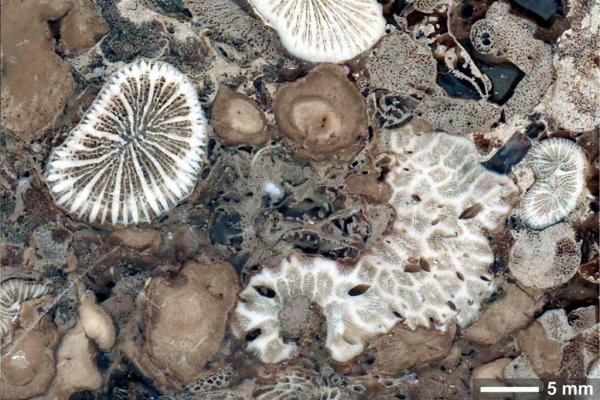
PRINCETON, N.J., Nov. 2 (UPI) — Coral get their color from algae, which attracts biodiversity and a healthy ecosystem. They also get nutrients. In return, coral offer shelter, protection from predators.
It is a partnership — according to new research published in the journal Science Advances — that began more than 210 million years ago.
A comprehensive survey of ancient coral fossils suggests the marine invertebrates were cooperating with algae as early as the late Triassic.
“The onset of symbiosis with algae was highly profitable for corals,” lead study author Jaroslaw Stolarski, a professor of biogeology at the Institute of Paleobiology at the Polish Academy of Sciences, explained in a news release. “It allowed them to survive in very nutrient-poor waters, and at the same time grow and expand.”
Like plants, algae convert the sun’s energy into nutrients using photosynthesis. In turn, they generate ammonium waste, which coral use as their own nutrients. Algal inhabitants and the nutrients they provide allow coral reefs to extreme more calcium-carbonate, helping coral grow faster and conquer new territory.
Research analyzed ancient coral fossils for several signs of algal symbiosis: the presence of fossil microstructures, as well as specific levels of carbon, nitrogen and oxygen isotopes.
“Although algae were not present in the fossils, they left behind chemical signatures,” said researcher Xingchen “Tony” Wang, a postdoctoral researchers at Princeton University. “We found strong evidence that the fossilized coral were symbiotic and that they lived in a nutrient-poor environment. We were able to link the environmental conditions from 200 million years ago to the evolution of corals.”
The fossils included in the study were collected from mountains near Antalya, Turkey — an area once covered by the Tethys Sea, when all of the planet’s continents formed a single body of land, Pangea.
Analysis of the fossil record suggests coral reefs enjoyed a period of rapid expansion some 205 million years ago, which corresponds neatly with the timeline of coral-algae symbiosis offered by the latest research.





